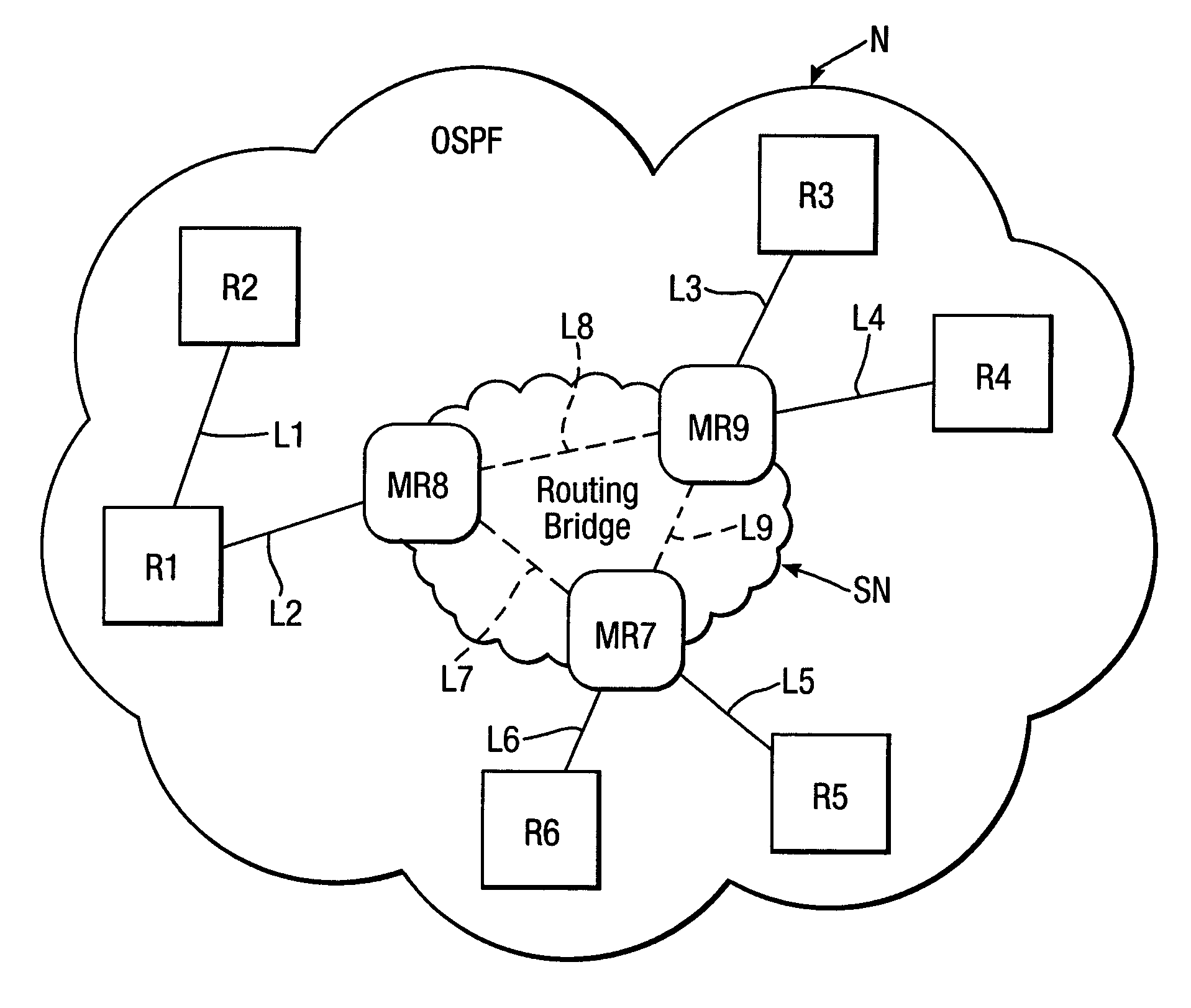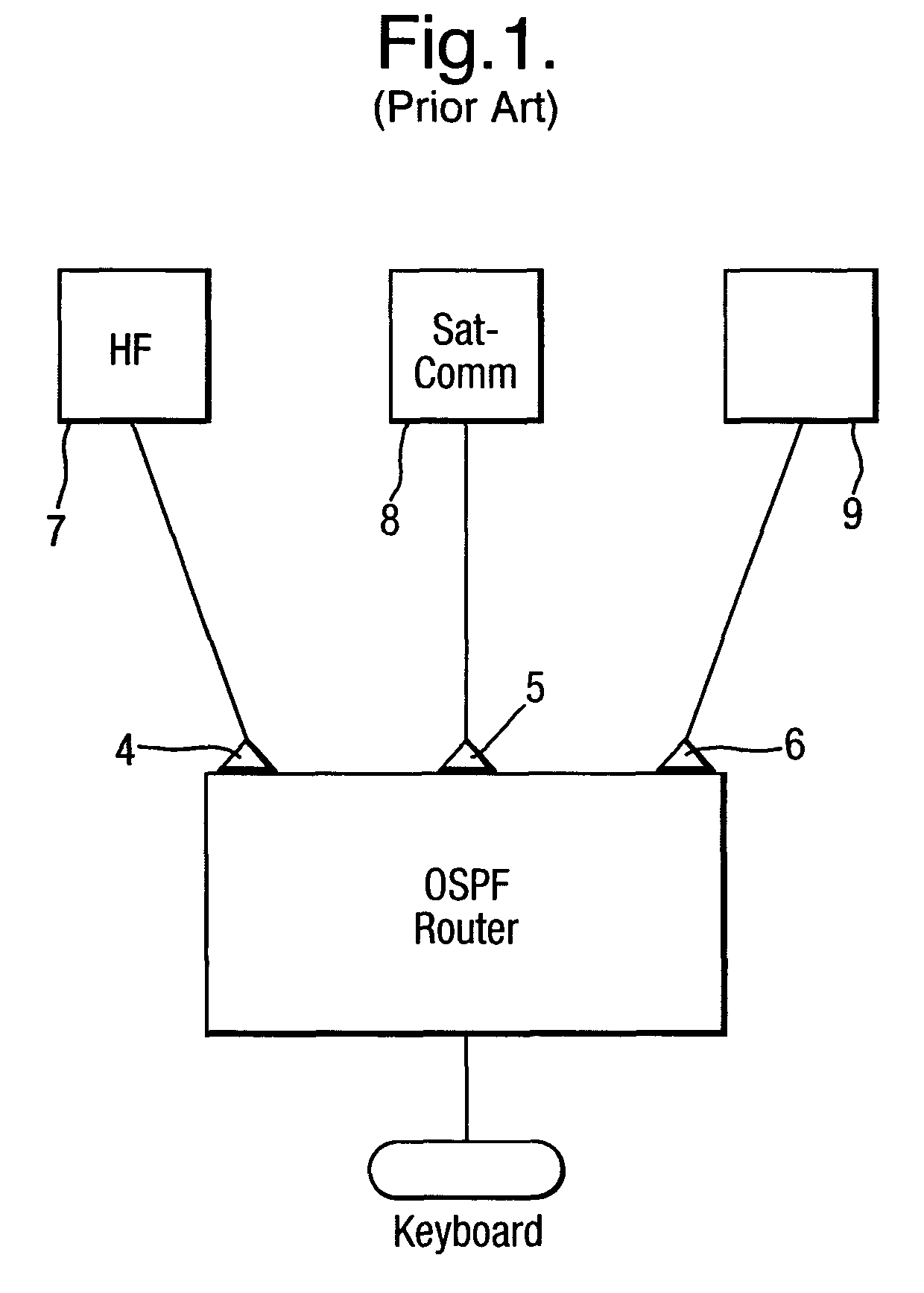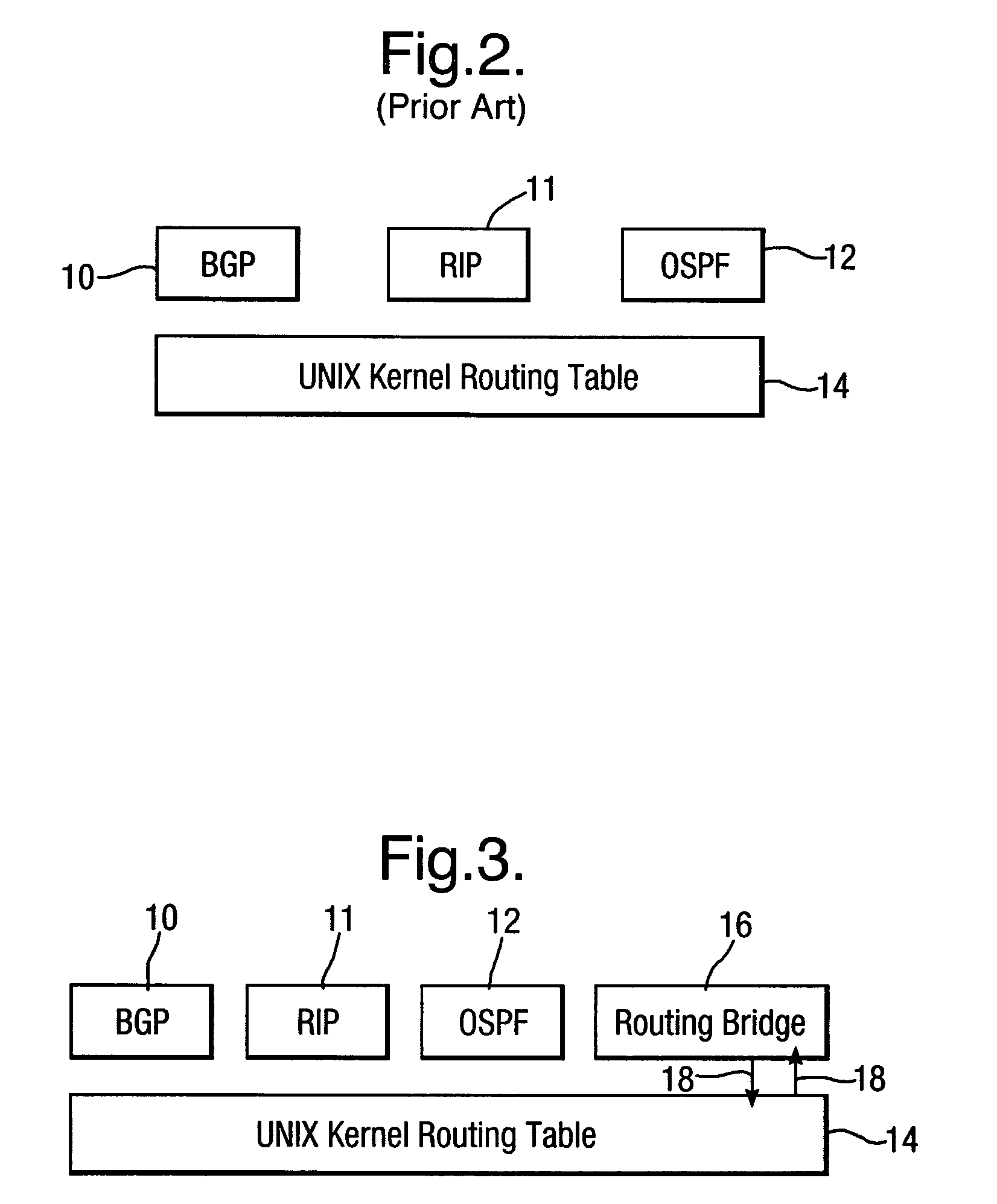Communications system
a communication system and communication system technology, applied in the field of communication system and communication method, can solve the problems of large and complex protocol, no straightforward way to link directly two communication systems, and ospf functions less well with communications links, and achieves the effect of low bandwidth requirements and high latency links
- Summary
- Abstract
- Description
- Claims
- Application Information
AI Technical Summary
Benefits of technology
Problems solved by technology
Method used
Image
Examples
Embodiment Construction
[0061]Referring to FIG. 1, a prior art router-controlled communications system 1 incorporates a router 1 in the form of a computer controlled by a keyboard 2. The router 1 has interfaces 4, 5 and 6 to three different types of communications apparatus, high frequency (HF) 7, satellite communications 8 and other types indicated collectively by 9. Message routing via the communications apparatus 7 to 9 is controlled by the router 1.
[0062]FIG. 2 shows software installed on conventional OSPF routers using a UNIX operating system, the software being BGP 10, RIP 11 and OSPF 12. This software is used for maintaining and updating route information in a local routing table held in a UNIX Kernel 14. The invention is not however restricted to a UNIX operating system: Windows may be used for example.
[0063]FIG. 3 shows software installed on a modified OSPF router which is configured by the software to implement the invention. This router also uses a UNIX operating system. Parts equivalent to thos...
PUM
 Login to View More
Login to View More Abstract
Description
Claims
Application Information
 Login to View More
Login to View More - R&D
- Intellectual Property
- Life Sciences
- Materials
- Tech Scout
- Unparalleled Data Quality
- Higher Quality Content
- 60% Fewer Hallucinations
Browse by: Latest US Patents, China's latest patents, Technical Efficacy Thesaurus, Application Domain, Technology Topic, Popular Technical Reports.
© 2025 PatSnap. All rights reserved.Legal|Privacy policy|Modern Slavery Act Transparency Statement|Sitemap|About US| Contact US: help@patsnap.com



